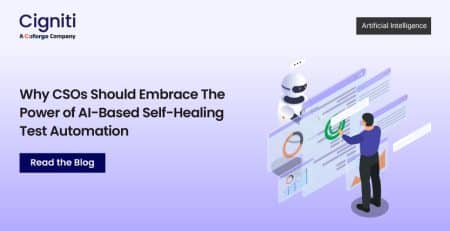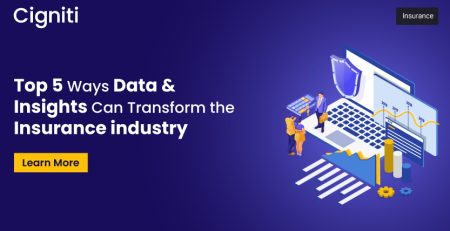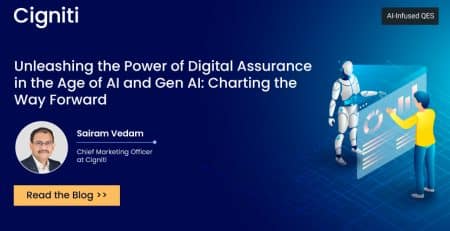Generative AI in Insurance: How It’s Helping in Risk Assessment & Claim Processing
|
Listen on the go!
|
Generative artificial intelligence represents a category of AI that utilizes generative models to produce text, images, or other forms of media. These models grasp the intricacies and structure of their input training data, enabling them to generate new data with similar characteristics.
Generative AI in insurance plays a pivotal role in expediting digitization processes. Its impact extends to aiding insurers in risk assessment, tailoring customer services, fraud detection, minimizing manual application errors, and transforming the industry with innovative solutions. These solutions encompass enabling precise risk assessment, implementing automation, optimizing claims, engaging clients effectively, and preventing fraud.
Generative AI insurance introduces automation that reshapes trust in insurance carriers. Beyond trust-building, insurance automation fosters business growth, mitigates risks, facilitates informed pricing decisions for risk selection, identifies and prevents fraud, expedites claims processing, and automates various business functions to curtail overall costs. Generative AI in insurance industry empowers insurers to leverage advanced Large Language Models (LLM), facilitating the creation of personalized recommendations and bespoke products. This, in turn, enables precise hyper-personalized pricing, ensuring heightened customer satisfaction.
Generative AI for insurance stands to benefit both insurance carriers and policyholders through:
· Enhanced capabilities in improving risk assessment and advancing fraud detection and prevention
· Providing superior and streamlined customer services, coupled with expedited claims processing
· Achieving cost savings and operational efficiency
· Ensuring regulatory compliance and transparency
· Smoothing the underwriting process with fewer manual interventions
· Generating more accurate reporting and forecasting, thereby transforming the customer experience.
Generative AI in Insurance: Use Cases – Risk Assessment and Claims Processing:
Generative AI has a wide range of use cases in the insurance industry, offering innovative solutions to longstanding challenges such as risk assessment, customer servicing, fraud detection, claim processing, etc. Here are critical generative AI use cases in underwriting and claim processing areas.
Automated Claims Processing

Claims processing encompasses various crucial tasks, including investigation, review, cost estimation, adjudication, adjustment, and decision-making. Many insurance carriers handle this process manually, which is time-consuming and susceptible to human error. Compounding this challenge is the complexity of the claims process, often exacerbated by inconsistencies in how customers provide information. Introducing automation through generative AI into insurance claims can streamline and rationalize this intricate process.
Generative AI assessment models offer a means to simplify the complex landscape of claims management. Automated responses can be generated for initial claim inquiries,
expediting the overall payment process and reducing the time and effort invested in claims processing. To illustrate, a customer might submit details and images of the damaged vehicle following an accident. A generative model, trained on analogous data, can estimate the damage from the images project repair costs, and contribute to determining the claim amount. These models are also adept at generating appropriate responses to customer queries regarding the status or specifics of their claims, enhancing communication efficiency.
The impact of Large Language Models (LLM) on claims processing is substantial. Handling intricate insurance claims, particularly those involving large volumes of unstructured data like text, images, speech, emails, sensor data, social media content, medical records, satellite data, geospatial data, or accident reports, can be time-consuming. Large language models can potentially revolutionize the claims process by efficiently analyzing extensive data, including claims history and policy information.
A large language model trained on a dataset of past insurance claims can predict the likelihood of a claim being accepted or denied. This enables insurance carriers to expedite claims processing and make timely decisions on acceptance or rejection. Like underwriting, large language models can analyze text from medical records or accident reports, extract pertinent information, and categorize claims based on risk. Consequently, the entire claims processing workflow can be automated, minimizing the need for manual intervention. The large language model offers a range of solutions in claim processing, including Question Answering, Sentiment Analysis, Information Extraction, Image Capturing, Object Recognition, and the classification, summarization, and extraction of claim decisions.
Envision a scenario where a generative AI model provides a claim decision and responds to a query such as “Shall I pay off this claim?” with a clear “yes” or “no,” accompanied by a summarized explanation of the decision-making process.
Improve Risk Assessment & Underwriting:

Generative AI insurance offers valuable support to underwriters by discerning crucial documents, extracting vital data, and freeing them to engage in higher-value tasks. By automating data call management structures, Generative AI streamlines the process, alleviating the workload on underwriting professionals and fostering more effective time management. Underwriters benefit from Generative AI’s ability to pinpoint pertinent documents, summarize content, clarify decisions, and extract essential information directly.
Generative AI assessment excels at replicating diverse risk scenarios based on historical data, assessing risk exposure, and determining premiums accordingly. For instance, leveraging insights from past customer data, generative models generate future customer data replicas, enabling the refinement of predictive models for more accurate risk estimation and insurance premium calculation.
Large language models, which assess the risk associated with insuring individuals or businesses, substantially contribute to insurance underwriting. These models can forecast future claims by evaluating extensive datasets encompassing claims history, demographic details, satellite data, geospatial information, and weather data. Drawing on a dataset of prior insurance claims, a large language model can predict the likelihood of future claims for specific individuals or businesses, enabling insurance companies to gauge associated risks and establish appropriate premiums meticulously.
Generative AI further showcases its capabilities by simulating diverse scenarios and identifying potential claims before they materialize through advanced analytics engines. This proactive approach empowers insurance carriers to take preventive measures and mitigate adverse consequences for those they insure.
Additionally, large language models prove instrumental in analyzing copious amounts of unstructured data, including text from medical records or social media posts. The extraction of pertinent information aids underwriters in evaluating risk and determining appropriate pricing with precision.
Conclusion
Undoubtedly, Generative AI in Insurance possesses tremendous potential to transform the automated process, identify potential risks, automate claim processing, establish accurate pricing models, reduce costs, and enhance industry efficiency. Its ability to analyze vast datasets and predict trends with precision facilitates the creation of more personalized policies and expedites processing. Generative AI aids insurance carriers in comprehending customer behavior and preferences, ultimately leading to the development of more effective products and services.
Cigniti offers comprehensive generative AI solutions, ensuring insurance companies actively engage in the AI landscape. With a wealth of experience in providing generative AI solutions, including testing, Cigniti tailors its approach to meet the unique needs of insurance companies, assisting them in gaining a competitive advantage. The proven track record and extensive testing and digital services portfolio position Cigniti as the preferred technology partner for insurance clients.
Need help? Talk to our insurance domain experts to learn more about the opportunities the generative AI solution brings to the insurance value chain.





Leave a Reply